The Great Western Railway’s 4900 ‘Hall’ Class were the GWR’s most numerous 4-6-0 type engines ever built.
They will be the focus of this week’s Class Information, and there 6959 ‘Modified Halls’ as designed and built by Hawksworth. Once looking at their careers, we will look at the amount saved for preservation.
GWR 4900 ‘Hall’ Class
By the mid-1920s, there was a growing need for a more powerful mixed traffic engine on the GWR. Once Collett had adequate express passenger engines, he turned his attention to producing a new mixed traffic engine.
Churchward had designed the 4300 2-6-0 class in 1911 for mixed traffic, but these engines were finding it hard to handle larger trains. Collett wanted a locomotive with the front bogie for stability and chosen to take a 2900 ‘Saint’ class engine and fit smaller 6 foot driving wheels over the 6ft 8in ones carried by the Saints.
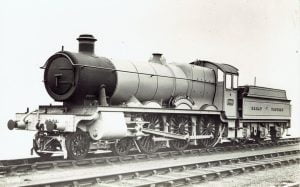
The Prototype for the new class chosen was No.2925 “Saint Martin”, which was withdrawn for rebuilding in 1924. This included altering the level the cylinders were fitted in relation to the coupled wheel’s axles and using a ‘Castle’ Class cab type. The engine was put through three years of trialing, undergoing a few changes to improve the design.
Production Series
The new design proved to be successful, with an order for 80 being placed at Swindon Works in 1928 under Lot 254. Collett made further changes to some dimensions for the first batch of engines. Notably, reducing bogie wheel diameter (3ft 2in to 3ft) and increasing travel for valve setting. The first engine built was No.4901 “Adderley Hall”, emerging from Swindon in December 1924.
-
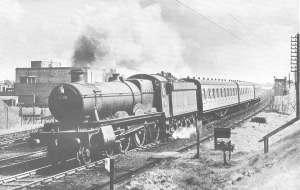
4900 Saint Martin // Credit Robert Ferris, WarwickshireRailways.com Lot 254 – No.4901 (Dec 1928) to 4980 (Feb 1930) – 80 engines
- Lot 268 – No.4981 (Dec 1930) to 5900 (Mar 1931) – 20 engines
- Lot Unknown – No.5901 (May 1931) to 5920 (Aug 1931)- 20 engines
- Lot Unknown – No.5921 (May 1933) to 5940 (Aug 1933) – 20 engines
- Lot Unknown – No.5941 (Feb 1935) to 5950 (Apr 1935) – 10 engines
- Lot Unknown – No.5951 (Dec 1935) to 5960 (Jan 1936) – 10 engines
- Lot Unknown – No.5961 (Jun 1936) to 6905 (Jul 1940) – 45 engines
- Lot Unknown – No.6906 (Nov 1940) to 6915 (Feb 1941) – 10 engines
- Lot Unknown – No.6916 (Jun 1941) to 6925 (Aug 1941) – 10 engines
- Lot Unknown – No.6926 (Nov 1941) to 6935 (Dec 1941) – 10 engines
- Lot Unknown – No.6936 (Jul 1942) to 6945 (Sep 1942) – 10 engines
- Lot Unknown – No.6946 (Dec 1942) to 6950 (Dec 1942) – 10 engines
- Lot Unknown – No.6951 (Feb 1943) to 6958 (Apr 1943)b- 8 engines
Performance in Service
Before the first batch of 80 was completed, further orders for more batches had been placed. The Hall proved perfect for mixed traffic duties across the whole of the GWR system where they could operate on. Both day and night, the class could be seen hauling express passenger and freight trains. The South West sheds of Penzance, Truro and Plymouth’s Laira took the first allocation before they were spread far and wide. The GWR’s top shed, Old Oak Common had several members of the class. Their main issue was axle loading of red, leaving the 4300s and smaller engines to haul these duties. This later lead to the design and construction of the 7800 ‘Manor’ and 6800 ‘Grange’ Class.
GWR 6959 ‘Modified Hall’ Class
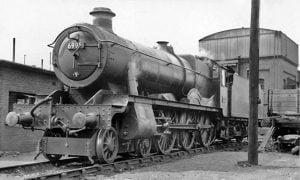
By the 1940s the conditions that steam locomotives were working in had charged over the decades. On the GWR, WW2 lead to poorer qualities of the coal being supplied to depots. The effect on the Halls being poor steaming. Wartime also meant less maintenance time for locomotives. With both of these factors and the Halls based on Churchward practices used by Collett, the class started to suffer in the 1940s.
Hawksworth, who became CME in 1941, decided to improve the design to coup better in these harsh wartime and post-war years. Although keeping the Hall appearance, Hawksworth made a number of changes to the design and construction of the Modified Halls. Plate frames were used extensively instead of bar frames, redesign of the cylinder casting, new superheater (larger and produced higher temperatures) and arrangement of the draughting layout.
Production Series
- No.6959 (Mar 1944) to 6970 (Sep 1944) – 11 engines
- No.6971 (Oct 1947) to 6980 (Nov 1947) – 10 engines
- No.6981 (Feb 1948) to 6990 (Apr 1948) – 10 engines
- No.6991 (Nov 1948) to 6999 (Feb 1949) – 10 engines
- No.7900 (Apr 1949) to 7905 (Apr 1949) – 6 engines
- No.7906 (Dec 1949) to 7919 (May 1950) – 14 engines
- No.7920 (Sep 1950) to 7929 (Nov 1950) – 10 engines
Performance in Service
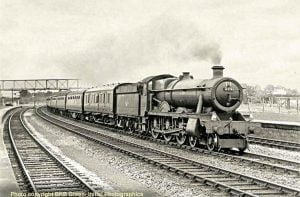
Like the Halls, the Modified Halls were well received. All of the improvements incorporated into the design proved successfully, this being noticed by both footplate and maintenance staff. Having the same Tractive Effort as the 4900s, they were allocated the same duties.
Decline and Withdrawal
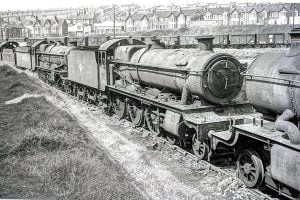
All but one member of both classes survived until the formation of BR, this being No.4911 “Bowden Hall” which was sadly destroyed beyond repair by a World War 2 bomb. As stated in the “Performance in Service” section, the Halls were very useful engines and withdrawals didn’t start until 1959 due to this.
Like most classes, the oldest members are withdrawn first due to their condition. For the Halls, this was No.4900 “Saint Martin”, which over the 52 years between 1907 and 1959 had run an impressive 2,092,500 miles. The last Hall to be withdrawn was No.4920 “Dumbleton Hall” in December 1965, which has also been saved from the scrap heap and is still with us today.
With the Modified Halls being new and improved, they lasted long into the 60s before their numbers were reduced. No.6962 “Soughton Hall” was the first engine withdrawn in January 1963 and scrapped where it was built less than 9 years earlier, Swindon Work. No.6998 “Burton Agnes Hall” was chosen to haul the last Western Region steam train in January
1966, being the last Modified Hall to be withdrawn.
Preservation
4900 ‘Hall’ Class
Of the 269 Halls built, 11 have survived into preservation. A large number of engines still present is due to all 11 locomotives being brought as scrap by Barry Scrapyard, who later sold the engines onto new owners who have restored or are restoring the locomotives back to operational status.
- 4920 “Dumbleton Hall” – Currently awaiting overhaul at the South Devon Railway. Withdrawn in December 1965, 4920 arrived at Barry in February 1966. Just over 10 years later the engine left for Buckfastleigh where the engine was restored and steamed for the first time in preservation. On expiry of 4920’s first boiler ticket in 1999, the locomotive was stored and has been ever since. Recently, the Hall has been reconnected to the South Devon Railway track after track was removed. More information on this can be found here.
-
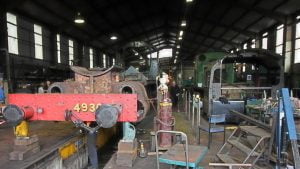
2016’s Open Weekend // Credit Loco Yard 4930 “Hagley Hall” – Currently undergoing an overhaul at the Severn Valley Railway. Withdrawn in December 1963, 4930 arrived at Barry in June 1964. Hagley Hall was an early departure from the famous scrapyard, being sold to the SVR in 1972, arriving at Bridgnorth early 1973. The restoration was started shortly afterward and the engine moved under its own steam again in 1979. After only seven years of heritage and mainline running, 4930 was withdrawn in 1986. The locomotive spent almost three decades as a static display at a few sites. Later 2013 saw the Hall moved into Bridgnorth’s workshop where its overhaul started. Latest work at SVR has seen the bogie frame dismantled, mainframe receiving replacement steel plates and assessing & cleaning smaller parts. Assessment of the wheel’s tyres at the SDR has shown they won’t need new ones at the present time. Machining of the newly-cast cylinder blocks will start towards the end of 2018.
- 4936 “Kinlet Hall” – Currently undergoing an overhaul at Tyseley Locomotive Works. Withdrawn in January 1964, 4936 arrived at Barry in June 1964. After almost 17 years sat rusting away, the Kinlet Hall Locomotive Company purchased the engine in 1981. After moving to a few different railways, restoration was completed early 2000. Following both several preserved railway visits and hauling mainline tours over two boiler tickets, 4936 was withdrawn in late 2016 for its latest overhaul. On return, the Hall will continue similar duties while based at the West Somerset Railway.
-
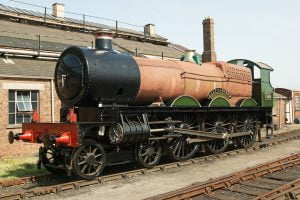
2999 “Lady of Legend” at Didcot Railway Centre // Credit: Didcot Railway Centre FB Page 4942 “Maindy Hall” – Used in the construction of new build GWR 2900 ‘Saint’ Class No.2999 “Lady of Legend”. Withdrawn in December 1963, 4942 arrived at Barry in June 1964. 1974 saw the Great Western Society at Didcot Railway Centre purchase 4942. After years of being stored, the decision was decided to use the remains of 4942 in the construction of a new build GWR ‘Saint’ Class. With the Saints being the basis for the Hall class, the majority of the parts from 4942 can be used. The project is at an advanced stage. For further information, please click here.
- 4953 “Pitchford Hall” – Currently undergoing an overhaul. Withdrawn in April 1963, 4953 arrived at Barry in November 1963. 20 years past before the locomotive found a new owner and left the scrapyard. Early 2004 saw the engine return to steam at Tyseley Locomotive Works. Like 4936, Pitchford Hall went on to gain a mainline ticket to pull tours on the mainline but also visited a number of heritage lines. 2013 saw its first boiler ticket run out, with owners Epping Ongar Railway putting the engine through its overhaul at the moment.
-
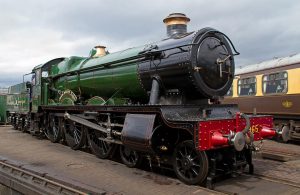
4965 “Rood Ashton Hall” at Tyseley // Credit Tony Hisgett 4965 “Rood Ashton Hall” – Currently operational on the mainline, based at Tyseley Locomotive Works. Withdrawn in December 1963, 4965 arrived at Barry in June 1964. As 10th locomotive to leave, 4965 only spent just over six years at Barry. On purchase, the engine was officially 4981 “Albert Hall”, but in the late stages of restoration, it was discovered Swindon Works had to switch the engine’s identities. 4965 was fully restored in the early 2000s, where it began hauling mainline tours advertised by its owners, Vintage Trains. The current livery is GWR Lined Green with “GREAT WESTERN” on tender sides.
- 4979 “Wootton Hall” – Currently undergoing restoration at the Ribble Steam Railway. Withdrawn in December 1963, 4979 arrived at Barry in June 1964. 4979 was the 179th locomotive to leave, by which point the coastal weather had majorly damaged what was left of the engine. Owners Furness Railway Trust moved Wootton Hall from a couple of storage locations before arriving at the Ribble Steam Railway. Here, restoration began. The plan is focused on completing the tender, but work on the locomotive is also being carried out. This has included removal of seriously deteriorated drag box.
- 5900 “Hinderton Hall” – Currently a static display at Didcot Railway Centre. Withdrawn in November 1963, 5900 arrived at Barry in June 1964. Leaving in mid-1971, restoration was carried out by the Great Western Society and completed in 1976. 5900 has seen mainline use, such as taking part in the ‘GWR 150’ celebrations in 1985. Visitors to DRC can see Hinderton Hall on display. In the future, an overhaul could possibly be undertaken but no plans have been put in place at the present time. The current livery is GWR Lined Green with “GREAT WESTERN” on tender sides.
- 5952 “Cogan Hall” – Currently awaiting restoration at the Llangollen Railway. Withdrawn in June 1964, 5952 arrived at Barry in November 1964. Almost 17 years past before the engine left Barry in September 1981. After based at a couple of sites, 2010 saw the engine transfer ownership to the Betton Grange Society. The Society is building a new build GWR 6800 ‘Grange’ Class locomotive, which they will use parts such as tender and bogie from 5952 to help in the project. Once 6880 “Betton Grange” is completed, the Society plans to restore Cogan Hall.
- 5967 “Bickmarsh Hall “ – Undergoing restoration at the Northampton & Lamport Railway. Withdrawn in June 1964, 5967 arrived at Barry in July 1964. A staggering 23 years past before the engine left the famous scrapyard, heading to its new home at Pontypool and Blaenavon Railway. Later moving from this line, 5967 is now being restored at the Northampton & Lamport Railway.
-
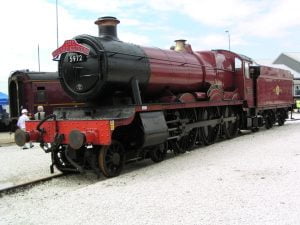
5972 “Olton Hall” at Doncaster Works in 2003 // Credit Phil Scott 5972 “Olton Hall” – Static display at Warner Brothers Studio Tours. Withdrawn in December 1963, 5972 arrived at Barry in May 1964. Leaving the scrapyard exactly 17 years later, after restoration 5972 went on to star on the Harry Potter movies. For filming, the engine was repainted red and renamed “Hogwarts Castle”. After its last boiler ticket expired, the engine has been on loan to Warn Brothers. There are currently no plans to overhaul the engine.
6959 ‘Modified Hall’ Class
Of the 71 Halls built, 7 have survived into preservation. Like the Halls, a large number of class members left is thanks to Barry scrapyard. All 7 members are in all states of repairs, with exact details found below.
- 6960 “Raveningham Hall” – Operational on the West Somerset Railway. Withdrawn in June 1964, 6960 arrived at Barry in July 1964. Just over 8 years past before the engine was moved to its new home of Steamtown at Carnforth where restoration started. Moving under its own steam in 1975 at SVR, where the engine was now based. Leaving the SVR in 1996, the engines next overhaul was carried out at The Flour Mill on the Forest of Dean Railway between 2009 and 2012. On completion, the locomotive was transferred to the West Somerset Railway where it has been based ever since. Current boiler ticket expires in 2021. The current livery is GWR Lined Green with “G W” on tender sides.
-
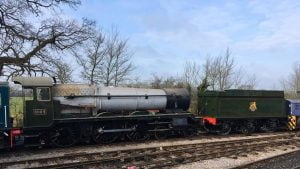
6984 “Owsden Hall” and Tender Shunted Outside // Credit Monty Luffman 6984 “Owsden Hall” – Under restoration at the Swindon and Cricklade Railway. Withdrawn in December 1965, 6984 arrived at Barry in February 1966. Purchased almost 21 years later, the Gloucestershire Warwickshire Steam Railway became 6984’s new home. 2013 saw the engine move to the Swindon and Cricklade Railway, where restoration is at an advanced stage. Owsden Hall’s tender has been completed at currently on loan for use with 6989.
- 6989 “Wightwick Hall” – Under restoration at the Buckinghamshire Railway Centre. Withdrawn in June 1964, 6989 arrived at Barry in August 1964. 13 years and 5 months past before a new owner brought the locomotive and moved it to Buckinghamshire Railway Centre. Ever since, the locomotive has been undergoing restoration, which is now is at an advanced stage. Recent work has focused on preparing the boiler for in-frame tests.
-
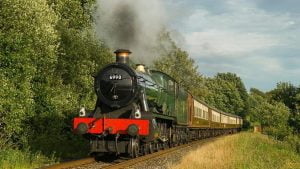
Credit: Liam Barnes 6990 “Witherslack Hall” – Operational at the Great Central Railway. Withdrawn in December 1965, 6990 arrived at Barry in February 1966. After just under 10 years rusting away, the Witherslack Hall Locomotive Society brought the engine and moved 6990 to the Great Central Railway in late 1975. Following 11 years of restoration, Witherslack Hall steamed for the first time in preservation in 1986. 2001 saw the engine withdrawn from service, with 14 years past before the locomotive was operational again. Current boiler ticket expires in 2026. The current livery is BR Lined Green with Early Crest.
- 6998 “Burton Agnes Hall” – Static display at Didcot Railway Centre. Withdrawn in January 1966, 6998 never went to Barry scrapyard and was instead purchased straight from BR by the Great Western Society. Arriving at Didcot Railway Centre in late 1967, Burton Agnes Hall has seen both mainline and heritage line use, over a couple of boiler tickets, up until 1996. Since then, 6998 has been a static display awaiting overhaul. The current livery is BR Lined Green with Early Crest.
-
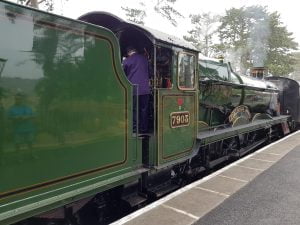
7903 “Foremarke Hall” at the GWSR // Credit Jamie Duggan, RailAdvent 7903 “Foremarke Hall” – Operational at the Gloucestershire Warwickshire Steam Railway. Withdrawn in June 1964, 7903 arrived at Barry in August 1964. Just under 17 years later and restoration had recently begun in 1981 at the Swindon and Cricklade Railway. On completion in mid-2003, 7903 spent 9 months at the line before moving to the Gloucestershire Warwickshire Steam Railway where the engine has been ever since. Current boiler ticket expires in 2026. The current livery is BR Lined Green with Late Crest.
- 7927 “Willington Hall” – Used in the construction of replica GWR 1000 ‘County’ Class No.1014 “County of Glamorgan” and new build GWR 6800 ‘Grange’ Class No.6880 “Betton Grange”. Withdrawn in December 1965, 6984 arrived at Barry in February 1966. In 2004, the frame from 7927 was purchased to build replica 1014. The boiler was purchased for use on 6880.
6990 Photo credit: Liam Barnes, see his Flickr account here
We hope you have enjoyed this week’s Class Information. Stayed tuned for the next article in the series.
Where Next?
News Homepage
For the Latest Railway News
RailAdvent Online Shop
Framed Prints, DVD’s / Blu-Ray’s and more
LocoStop Community
Come and share your railway pictures


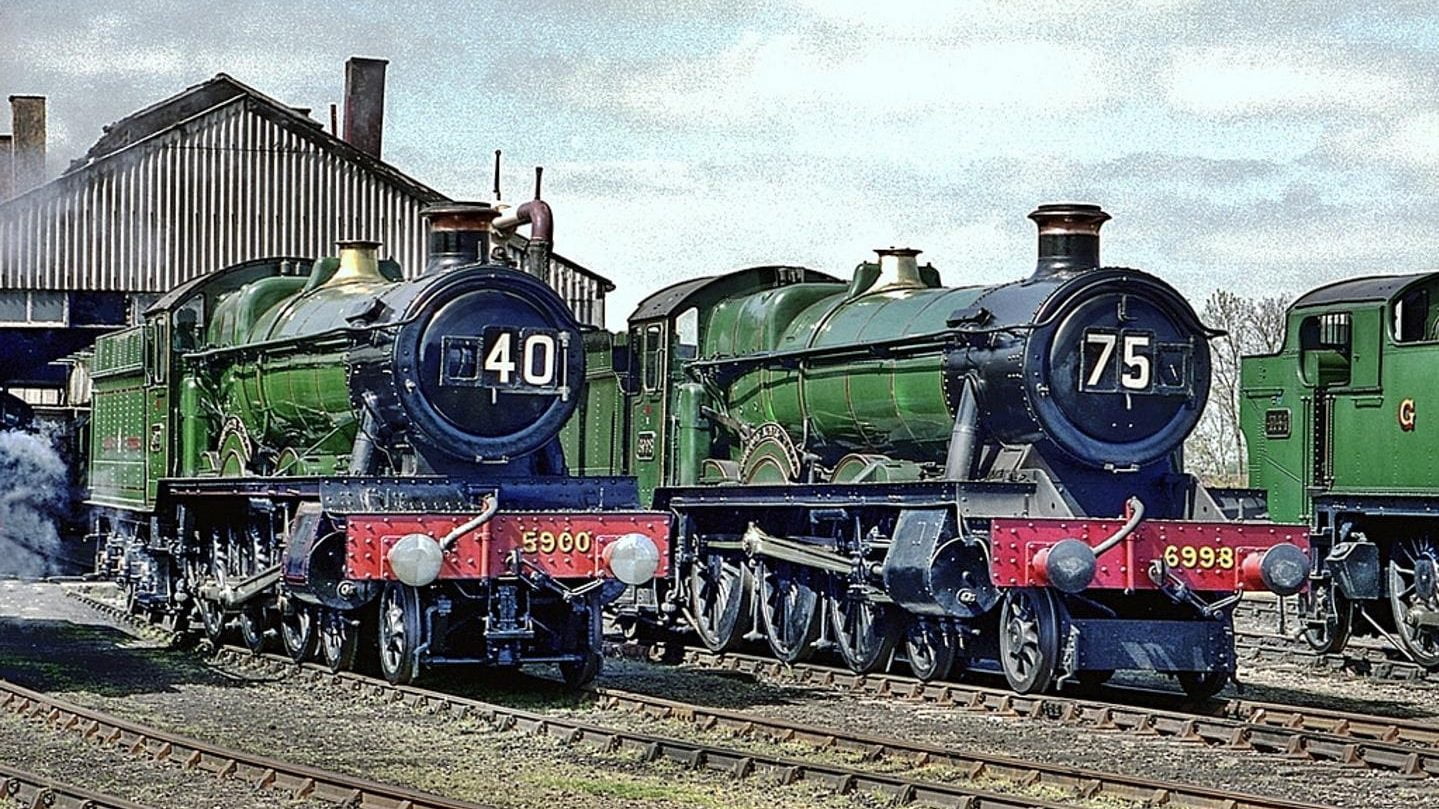
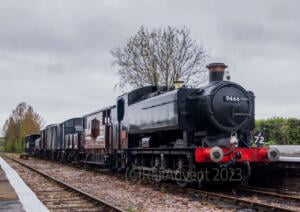


Responses